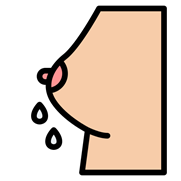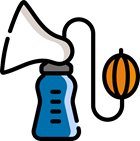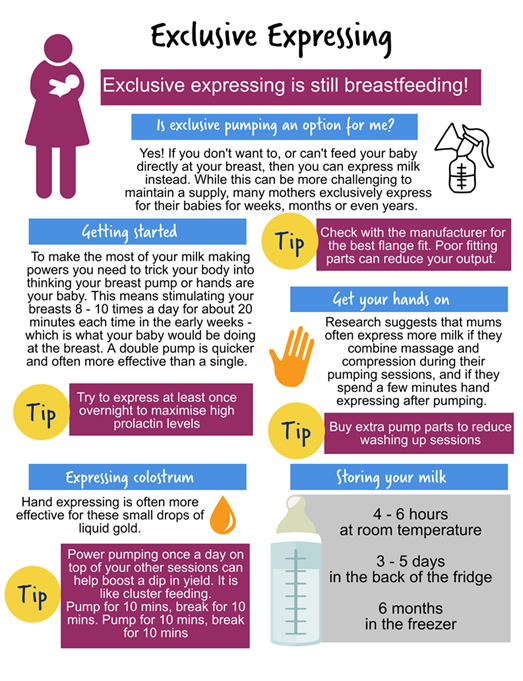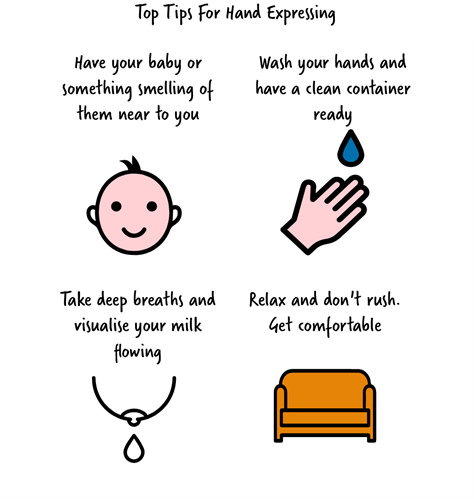Expressing milk is when you take milk from your breasts so you can feed it to your baby straight away, or store it in the fridge or freezer to use at a later time. You can express breastmilk by hand or with an electric or manual pump, whichever you feel more comfortable using.
Before you express milk, it's best to wait until you and your baby feel confident with breastfeeding.
There are various reasons why you may need or choose to express milk:
Remember, practice makes perfect. It can take time to learn how to express milk. In the beginning milk can come out in all directions. Relax and don’t worry!
Why Express by Hand?
You might want to hand express breastmilk (squ eeze milk out of your breast) because:
eeze milk out of your breast) because:
Preparation
It is important to stimulate the breast by massaging, this helps the milk to flow. Spend a few minutes gently stroking the breast with the backs of your fingers or use light circular movements with your fingertips, all around the breast. Touching your nipple will also help.
Location
Place your finger and thumb about 2 - 3 cm away from the base of the nipple in a 'C' shape.
Expression
Keeping your finger and thumb opposite each other, squeeze and release without moving the position of your fingers. It may take a few minutes for the milk to flow. It will start as drips, then squirts, then slows down again.
Collect the milk in a clean container
When the flow has slowed, rotate fingers around the breast and repeat the process to express milk from the whole breast. Repeat the same process on the other breast.
There are many different types of breast pumps available and the one you pick will depend on your needs and budget. Some are basic handheld pumps that are useful if you occasionally pump. You can also use battery-operated pumps which do the hard work for you. These are especially useful if you are busy or work full time.
are many different types of breast pumps available and the one you pick will depend on your needs and budget. Some are basic handheld pumps that are useful if you occasionally pump. You can also use battery-operated pumps which do the hard work for you. These are especially useful if you are busy or work full time.
If you have a double electric pump, you can pump both sides at the same time. Double pumping is often recommended because it cuts pumping time in half. Usually the total pumping time for each session is only 10 to 15 minutes. This may make it easier to schedule breaks at work.
Make sure your pump and all the parts (bottles, valves, funnel etc) are clean and sterile before using them. If your baby is in hospital because they are ill or premature, your midwife will help you clean and sterilise the equipment.
Exclusive Expressing
If you have made the choice to feed your baby exclusively with expressed breastmilk here is some great advice to help you with this.

Top Tips for Hand Expressing

How to Store Breastmilk
You may want to store some of the breast milk you have expressed to use at a later time. If you do this, make sure it is in a sterilised container (an ice cube tray is good) or special milk storage bags. Remember to label and date it. It is best to store it in small quantities so you avoid wasting any.
 Your breast milk can then be kept:
Your breast milk can then be kept:
The best way to defrost frozen breast milk is by leaving it in the fridge to thaw out completely. If you need to defrost it quicker, do so by placing the bag or container in a jug of warm water. Ensure you check the temperature before feeding the baby.
Never defrost milk in the microwave as this is unsafe. Try not to shake it as this can alter the taste of the milk.
Whichever way you defrost the milk, it must be used immediately and never refrozen.
Returning to Work?
Returning to work when you are still breastfeeding your baby can bring up lots of questions. You may be worried about how this can continue, but you don't need to stop unless you choose to do so.
You can continue to breastfeed your baby before you leave and when you return - it can be a lovely way to say goodbye and hello. Keep breastfeeding in the evening and through the night, this will help you produce milk to express for your baby.
Although breastfeeding and expressing breaks in the workplace are not a statutory requirement, employers must meet obligations to breastfeeding employees under Health and Safety Law, Flexible Working Law and Discrimination Law.
Expressing Assessment Form
An expressing assessment form is something that you, or a health practitioner working with your family can use to identify if your baby is feeding well.
If your baby is less than 28 days old you can contact your local midwifery team or you can contact the Healthy Child Programme at any time following your baby's birth by calling Just One Number on 0300 300 0123 or texting Parentline on 07520 631590.
Our opening hours are 8am-6pm Monday to Friday (excluding bank holidays) and 9am-1pm on Saturdays.
Norfolk Healthy Child Programme has a team of infant feeding champions who can contact you by video call/telephone initially to discuss your questions and refer you to further help if required. All of our staff are trained to Unicef standards to provide you with the best possible breastfeeding support and advice.
It may help in the first instance to look again at our page on Positioning and Attachment or read the Essential Guide to Feeding & Caring for your Baby.
Norfolk’s Early Childhood and Family Service (ECFS) offers support for all parents and carers with children aged 0 to 5 years.
To speak to other Norfolk parents and carers, you can join our online community forum below.
Also in this section...